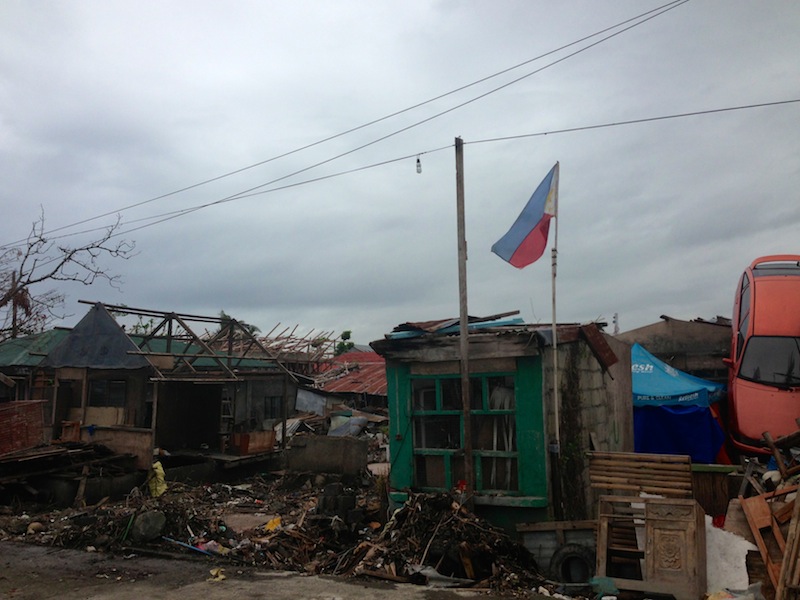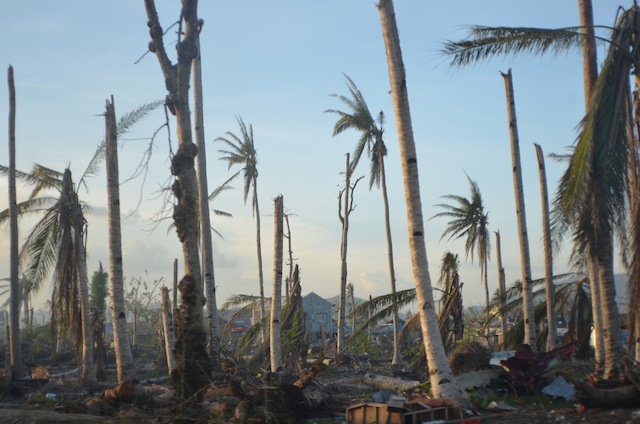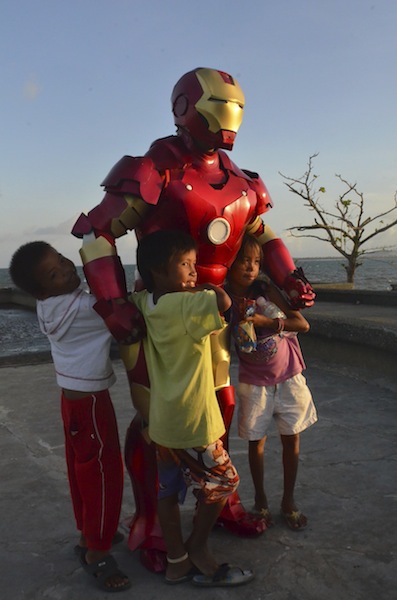MARABUT, Samar — “There’s no Christmas, at least for this year,” Jerry Ilustrisisimo said, the swath of fallen coconut trees enveloping his sight. Ilustrisisimo, a coconut farmer from the province of Samar, has yet to find another source of living after typhoon Haiyan (local codename Yolanda) destroyed thousands of coconut trees, reducing almost a decade of hard work to nothing.
Ilustrisisimo, who also lost his home to Haiyan, now depends on aid from humanitarian organizations and the government. They receive relief goods twice a week. He lives in Barangay Amantillo, which is by the sea. He and his neighbors also used to fish before Haiyan, but their boats have now all been ruined. Some of the men now clean up debris for P260 or $5 a day. They will have this job for 15 days, but it remains a question on how they would earn money after that.
A month after Haiyan – one of the world’s strongest storms to make a landfall – hit the Philippines, the lack of jobs and livelihood had become more pronounced. The International Labor of Organization said 2.2 million people are “vulnerably employed.” Some establishments have started to operate again and people had set up stalls where they can sell food items, but much has to be done to generate investments that will provide not just emergency employment.
The landscape still screams of destruction. There were houses with torn roofs, schools with damaged walls. Graffiti of messages cursing the storm could be seen in various parts of Tacloban city and the town of Guiuan in Samar. Electricity has yet to stabilize.
As this reality stares at you in the face, we remember the plea of Climate Change Commissioner Naderev ‘Yeb’ Sano in the 19th UN Framework Convention on Climate Change (COP19) in Warsaw, Poland, where he said that the world should stop this “climate change madness.”
The tragedy caused by Haiyan should raise the urgency for developed countries to increase and accelerate their mitigation efforts and to provide clear sources of climate change finance. Haiyan, in particular became the impetus for the Philippine delegation to push for the loss and damage mechanism in COP19. Under loss and damage, developed countries are envisioned to provide financial and technical assistance to developing countries which suffered from the adverse impacts of extreme weather and slow onset events. Warsaw saw the birth of the mechanism, but it remained under the Cancun Adaptation Framework. In 2016, the Philippine delegation will fight to change this, as we believe that loss and damage is another challenge that goes beyond adaptation.
As we prepare for 2016 and the future UN Climate Change talks, we also start to rebuild the areas damaged by Haiyan. Aside from the reconstruction of infrastructure and the economy, there is an underlying greater need to strengthen the spirit of the people, restore hope and heal wounds. Everyone is doing his part and no one is too powerless not to contribute to making things better.
In Tacloban, we saw a man dressed up as the comic book superhero Iron Man, trying to entertain children. Juan Vicente Zamora, a call center supervisor from the neighboring province of Cebu, also handed out chocolates to children. As he posed with kids in front of the bronze statue of Gen. Douglas MacArthur in Leyte, we saw a sliver of gaiety. For the children who have lost so much because of the storm, sometimes moments like these are enough to keep their innocence intact.
President Benigno Aquino III has also appointed another Iron Man so to speak, to head the $8.17-billion reconstruction efforts. Aquino named former police chief and senator Panfilo Lacson, known for his anti-corruption drive and no-nonsense attitude, to lead the rehabilitation of the provinces devastated by the disaster. Lacson is not a climate change expert, hence he will need a good technical team to help him. Lacson’s main responsibility, as Aquino ordered, though, is for him to watch over the rehabilitation funds. They cannot go to the pockets of the few, nor can they be misused for programs that will not work.
Media and the civil society will track the flow and the use of the money with utmost vigilance. The Citizen Action Network for Accountability launched the Yolanda Citizen Watch to monitor the allocation and use of the funds for recovery and reconstruction initiatives. “We need real People Power to make sure every single centavo counts,” Rorie Fajardo, CANA program manager, said. The government, in its part, through the Department of Budget and Management has also set up the Foreign Aid Transparency Hub, an online portal that provides and updates information on aid received from different countries and organizations. FAITH has posted that the international community has pledged a total of $538,978, 033 in foreign aid to the Philippines.
Survivors themselves want to take part in this process. They want to know how much of the aid has been given, where did they come from and where will they go to. Genelyn Albarico – one of the survivors in Guiuan, Samar who took in her neighbors after Haiyan destroyed their homes – cautioned the government against extending funds to to local leaders. “Give it directly to the survivors. Don’t give it to the local leaders,” she said, saying it may not reach them completely.
Raquel Requiez, whom I met in a mass grave in Palo, Leyte, said the same thing. Requiez lost 6 relatives to the typhoon, all of them buried in the mass grave which contains at least 150 bodies. “If they entrust the money the mayor, it may just be stolen,” she said. There is reason for worry. Some $20 million in funds that were initially allotted for the farmers affected by typhoon Ketsana in 2009 have allegedly been siphoned to dubious nongovernment organizations headed by businesswoman Janet Lim Napoles. Napoles was reportedly in cahoots with the former agriculture secretary Nasser Pangandaman. Needless to say, under Lacson’s three year-term, transparency should be a priority. Those who survived Haiyan deserve nothing less.
Haiyan has taken almost everything away from the survivors – even Christmas – for some. But it has also changed people. It gave them the tenacity to demand accountability from their leaders. In Warsaw, we said that Haiyan should change how the world will address climate change. We now echo this message with the vow that Filipinos will start with themselves.
Report by Purple Romero, PNEJ member
Photos by Imelda Abano, PNEJ member
Latest posts by EnviroNewsph (see all)
- Global fund aimed at protecting nature and accelerate investment in conservation, launched in Canada - August 25, 2023
- Why ‘loss and damage’ is the most bitterly fought-over issue at COP27 climate talks? - November 18, 2022
- U.S. hands over P2.3M in equipment and wildALERT system to PH to protect wildlife - December 16, 2020




